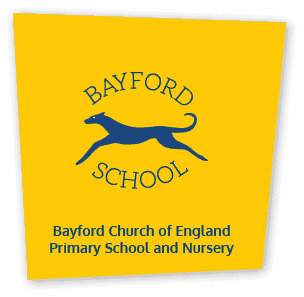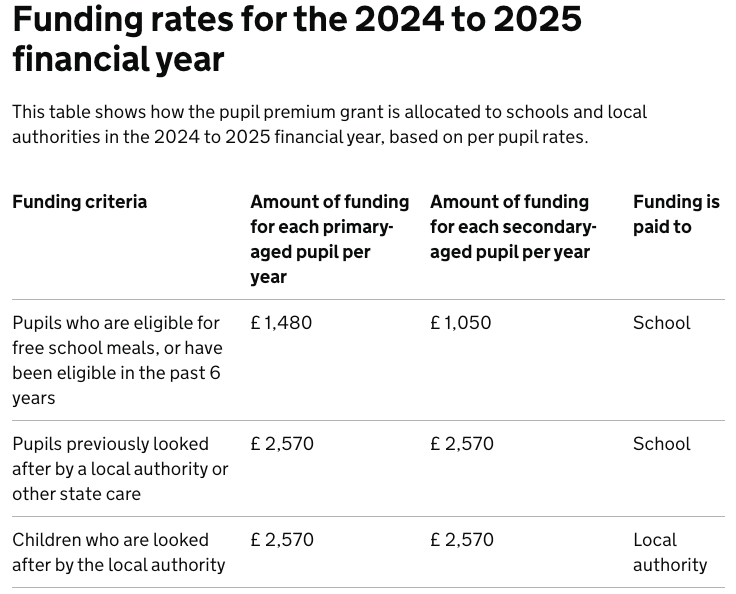Financial information
There are legal obligations for maintained schools to publish financial information, but our own vision and values lead us to want to be even more transparent than the law requires. The Governing Body and its Resources Committee review, monitor, and evaluate the allocation and management of the school’s resources in accordance with agreed policies, procedures, and protocols, in order to secure the best possible outcome for all pupils and the most effective use of public funds. We have nothing to hide, so if you would like an answer to a question and cannot find it on this site, please get in touch!

Salary disclosure
All maintained schools are required to publish how many school employees (if any) have a gross annual salary of £100,000 or more. Bayford does not have any employees with a salary of £100,000 or more and, as a small primary school, even the salary band for our Headteacher is far below this level.
Hertfordshire Scheme for Financing Schools
Almost all the money to run our school is public money allocated to the school through the local authority, Hertfordshire County Council. Local authorities are required to publish schemes for financing schools, setting out the financial relationship between them and the schools they maintain. You can find out more about the local scheme under which we operate from Hertfordshire County Council. We have formally adopted the scheme and the county’s financial regulations.
In broad terms maintained schools are funded chiefly on the basis of pupil numbers, so the larger the school, the more money will be available to the school. The way in which the school chooses to spend the money is, however, largely a local matter for the school’s senior leadership team and governing body to determine. Quite properly schools are held to account for the decisions taken, both by school inspections and by the county’s internal audit procedures.
Our financial policy
Working within the Hertfordshire scheme and having adopted the county’s Financial Regulations, we manage our financial affairs in accordance with our own Financial Policy and Schedule of Delegation. This policy is reviewed every two years, or whenever required by changes to regulations at national or county level. We are not required to publish this policy, but we are making it available in the interests of full transparency and in accordance with our school vision and values. Each year we also complete a Schools Financial Value Standard (SFVS) return, a nationally required process which helps us evaluate the adequacy and effectiveness of our financial management.
Our financial policy document consolidates the six previously distinct financial policy documents set out below:
- Private Fund Account Policy
- Charging and Remissions Policy
- Lettings Policy
- Control of Assets Policy
- Debt Recovery Policy
- Payment of Governor’s Allowances Policy
We find that keeping these together in a single document, with the Schedule of Delegation appended, helps us to ensure that we are working consistently and effectively to deliver the best value for money. You can download our latest policy document using the button below.
Our latest accounts
Schools have to work on a financial year which is out of step with the academic year. Our accounting period runs from April to March even though we usually plan school development on a year running from September to August. The complete and detailed accounts are published in full on the central government systems (see Compare us with other schools, below), but generally not until the autumn term.
Income and expenditure
Most of our income comes from central government through Hertfordshire County Council. The rest comes from range of sources, including supply teacher insurance payments, grants from charitable bodies to which the school has applied, donations and voluntary contributions, income from facilities (lettings), catering income (school meals), and contributions to school visits. In expenditure our largest cost is always staffing, with premises and occupation costs generally around 10% and supplies and services between 10 and 15%.
Compare us with other schools
All maintained schools are also required to provide a link to the webpage which is dedicated to each school on the schools financial benchmarking service. This is a very useful government site which gives details of income and expenditure for each maintained school going back several years and allows users to compare similar schools.
Benchmarking for best value
At Bayford we use this site ourselves each year to help test whether we are achieving the best value for money in our management of the school.
Publishing our Pupil Premium statement
Each year, usually in the autumn term, we will publish on this page a statement outlining how we use the additional funding we currently receive, why we have chosen to use it in this way, and what evidence we have to support the decisions we have taken. You can download the current statement by using the button below.
Schools receive PE and sport premium funding based on the number of pupils in years 1 to 6. Schools with 17 or more eligible pupils receive £16,000 and an additional payment of £10 per pupil.
You can find out more about funding allocations for 2023 to 2024 and read the conditions of grant for 2022 to 2023.
We must use the PE and sport premium to:
- develop or add to the PE, physical activity and sport that our school provides
- build capacity and capability within the school
- to ensure that improvements made now are sustainable and will benefit pupils joining the school in future years
Publishing our Sport Premium Statement
Each year, usually in the summer term, we are required to publish details of how we spend our PE and sport premium funding and show:
- the amount of PE and sport premium received
- a full breakdown of how it has been spent
- the impact the school has seen on pupils’ PE, physical activity, and sport participation and attainment
- how the improvements will be sustainable in the future
We are also required to publish the percentage of pupils within our year 6 cohort who met the national curriculum requirements for swimming. You can download the current statement by using the button below.
This page was last updated on 6th December 2024

